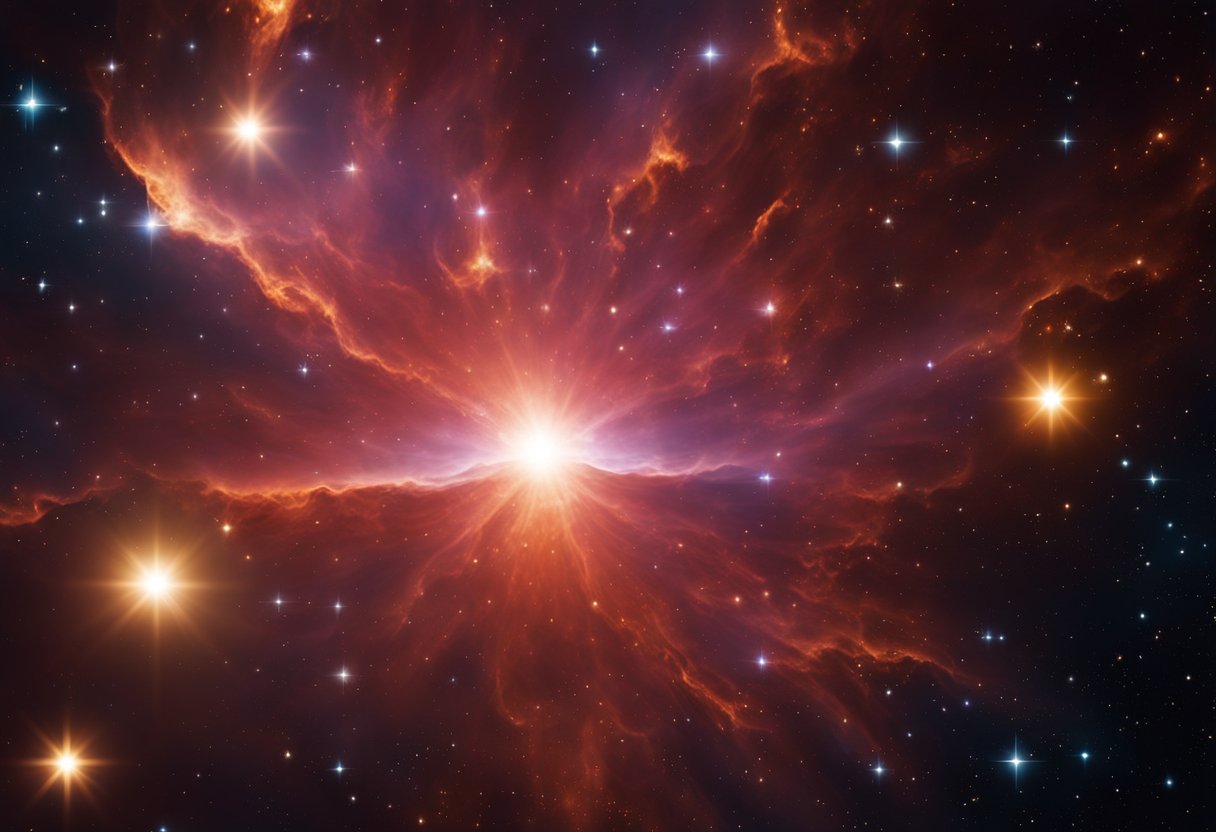
Nebulae Discovery – Nebulae are among the most enchanting and complex structures in the cosmos, captivating astronomers and the public alike. They are vast clouds of gas and dust suspended in space, and their discovery has not only been a visual spectacle but also a significant achievement in astronomy. Our understanding of nebulae serves as a keystone in deciphering the life cycle of stars, as these celestial nurseries are where stars are born and, at times, where they meet their end. The intricacies of their shapes and the vibrant spectrums they exhibit make each nebula unique and an object of extensive study.
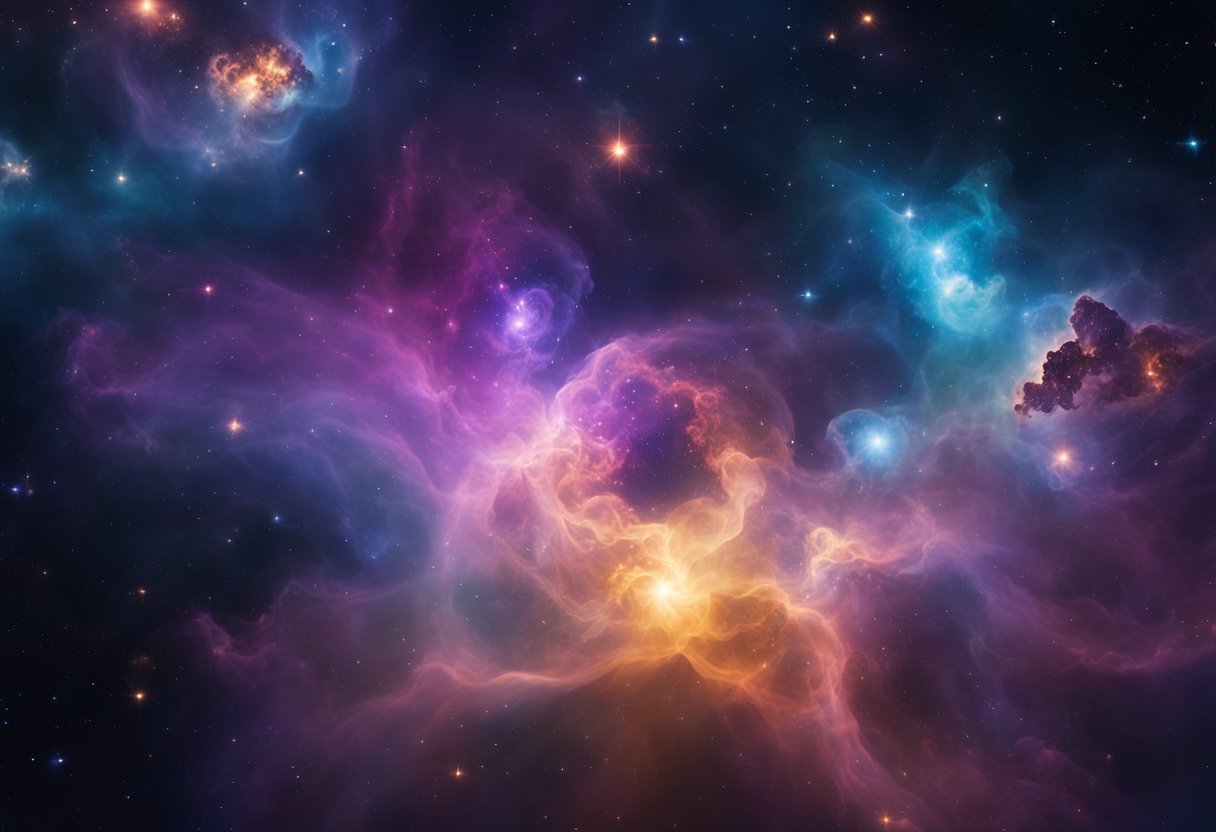
In the vastness of space, nebulae stand as markers of both creative and destructive cosmic processes. Historical studies of nebulae have progressed remarkably over the centuries, from their initial chronicling in the Messier catalog to their intricate analysis through modern spectrometry and imaging techniques. The development and deployment of space telescopes have revolutionised our capacity to uncover and understand these celestial phenomena, allowing us to witness the awe-inspiring extent of nebulae formation and interaction within galaxies. These telescopes provide critical insights into the characteristics and types of nebulae that populate our observable universe.
Our pace of discovery continues to accelerate as we deploy advanced technologies that enhance our vision of the cosmos. The vast archives of data and images captured by these instruments not only aid in mapping and cataloguing nebulae but also in predicting the future pathways of nebula research. As we look to the stars, we recognise our role in piecing together the cosmic puzzle, wherein nebulae play a fundamental part in shaping the narrative of space and its celestial entities.
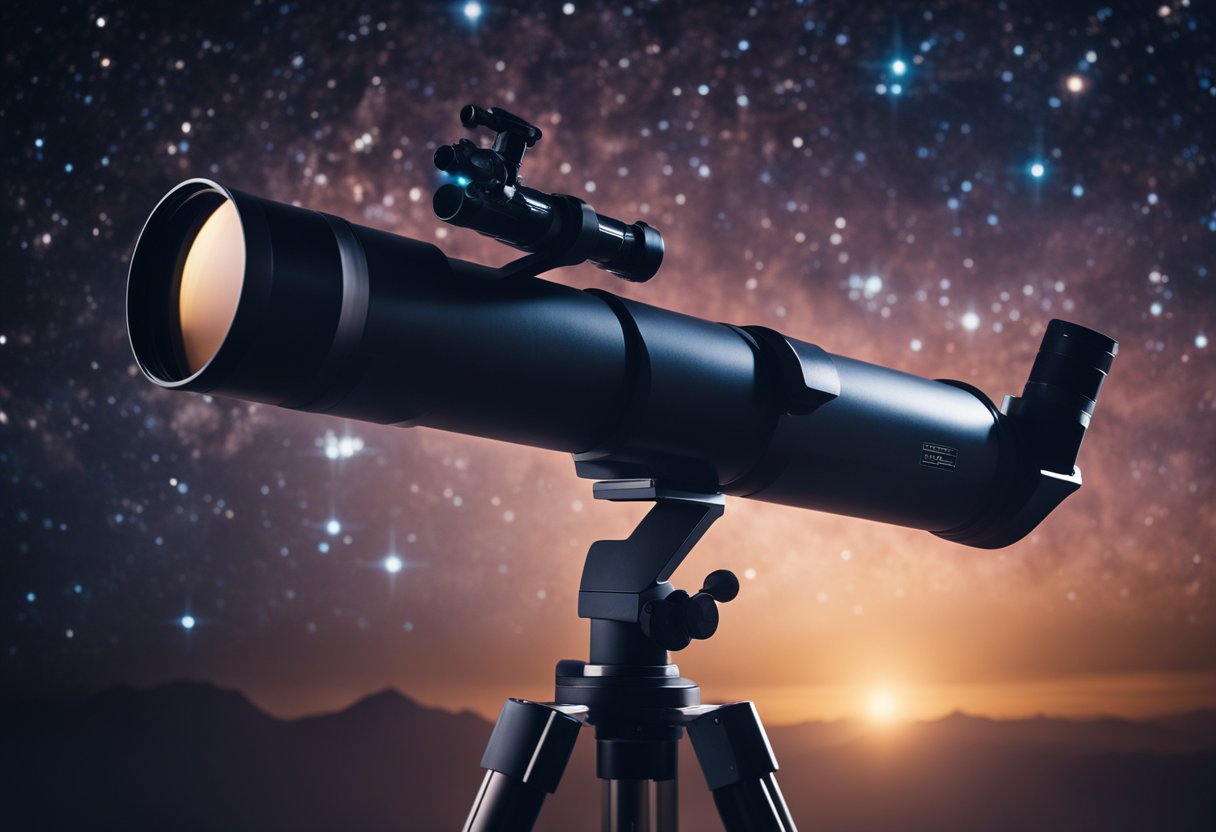
In tracing the lineage of astronomical discoveries, nebulae emerge as artefacts of wonder, revealing much about our universe’s past and future. We endeavour to understand their nature and disposition through persistent observation and technological advancement.
Our earliest records of nebulae come from Chinese astronomers, who scrupulously noted celestial phenomena. The intricate details of these early sightings, however, were cloaked from us until the advent of the telescope. In the 17th century, the Orion Nebula was unveiled as more than a mere star, marking a significant leap in our cosmic comprehension.
The telescope stands as a bastion of human ingenuity, its evolution allowing us to peer deeper into the cosmos. With each technological leap, from Galileo’s initial refracting telescopes to the Hubble Space Telescope, our vision of nebulae has sharpened, transforming them from celestial blur to cradles and graves of stars.
Dotted across the night sky are the nebulae’s telling silhouettes, each with its tale of cosmic spectacle. The Hubble Space Telescope has been paramount in these discoveries, transmitting to us breathtaking vistas like the Eagle Nebula’s Pillars of Creation and the vibrant ring of Supernova 1987A. These are but a few chronicles in the stellar anthology that NASA has helped curate from the heavens.
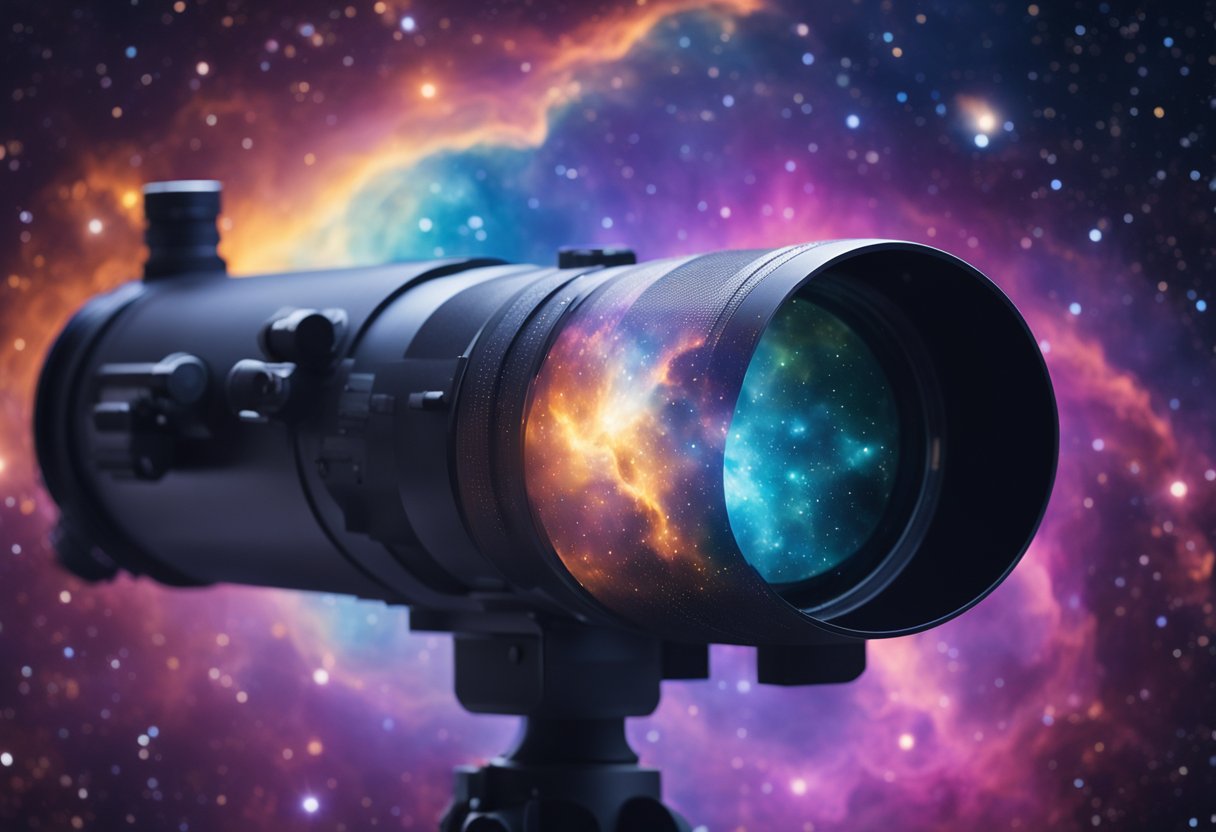
In our quest to understand the cosmos, space telescopes serve as our eyes, peering deep into the universe. They allow us to witness the birth and death of stars, offering insights that ground-based telescopes can’t provide due to atmospheric distortion.
The Hubble Space Telescope has been instrumental in our stellar research since its launch in 1990. It captured the Pillars of Creation within the Eagle Nebula, unveiling where new stars are formed. This iconic image has been crucial for our understanding of stellar nurseries, lying approximately 6,500 light-years from Earth. Hubble’s contribution extends to monitoring the changes within these nebulae, helping us observe the dynamic processes that govern star formation.
Launched by NASA in 2003, the Spitzer Space Telescope has enriched our knowledge profoundly, especially concerning the infrared universe. It’s provided detailed observations of star-forming regions and planetary nebulae such as NGC 3132, revealing a complex molecular environment caused by stellar interactions. Spitzer’s infrared capabilities allow us to look through cosmic dust and study objects that are too cold to emit visible light, thus uncovering phenomena that Hubble could not observe alone.
As for future missions, our expectations are set high with ventures like the James Webb Space Telescope (JWST), a collaboration between NASA, the European Space Agency, and others. It’s set to investigate regions like the Orion Nebula’s Trapezium Cluster, aiming to unravel the mysteries of star formation. With its advanced sensors, the JWST will look further back in time than any previous telescope, providing us with clearer views of the earliest galaxies and stellar phenomena. We anticipate these missions to continue expanding our cosmic knowledge, answering questions we have yet to conceive.
Through these telescopes, we deepen our understanding of the universe and our place within it. Each mission contributes a piece to the ever-growing puzzle of cosmic evolution.
Nebulae are astounding cloud-like formations within our universe, made up primarily of gas and dust. These interstellar clouds showcase the birth and death of stars, offering a glimpse into the cyclical nature of the cosmos.
Emission nebulae are regions of ionised gas that emit light at various wavelengths. These often vast and colourful nebulae are primarily made up of hydrogen gas, which glows red due to the ionisation from nearby hot stars. One of the most renowned emission nebulae is the Orion Nebula, a place where new stars are being forged.
Unlike emission nebulae, reflection nebulae do not emit light on their own. They are visible because they reflect the light of nearby stars. These nebulae often appear blue because they scatter the short-wave, blue light more efficiently than red. An example of this type is the Witch Head Nebula, reflecting light from the bright star Rigel in Orion.
Planetary nebulae represent a late stage in the life cycle of a star. When a star similar to our Sun reaches the end of its life, it expels its outer layers, creating an often symmetrical shell of gas around a dense white dwarf. The Ring Nebula, for instance, is one such planetary nebula that demonstrates the beauty of this stellar phase.
Supernova remnants are the dramatic outcome of a star’s explosive demise in a supernova event. The left-behind gas and dust, rich in elements, are shot into space, contributing to the creation of new stars. A famous example is the Crab Nebula, the aftermath of a supernova observed on Earth in 1054 AD.
Each type of nebula holds its unique imprint on the galaxy, testifying to the various processes governing the universe’s lifecycle. Through our understanding of nebulae, we better grasp the intricacies behind stellar evolution and the cosmic dust that binds us all.
Nebulae are astronomical wonders where the cosmos cradles new stars into existence. These vibrant regions are awash with gas and dust, setting the stage for stellar creation.
Within the heart of these nebulae, we observe the birth of new stars. As vast amounts of gas and dust collapse under their own gravity, they begin to heat up, eventually leading to the ignition of nuclear fusion. This marks the formation of a new star. Stellar nurseries such as the Orion Nebula are well-known for nurturing such nascent stars, their processes visibly monitored by telescopes including NASA’s James Webb Space Telescope.
Star-forming regions are often marked by specific characteristics, such as the density of gas and dust necessary to forge stars. The Trapezium Cluster in the Orion Nebula serves as a classic example, where young, hot stars heat the surrounding nebula, causing it to glow and allowing us to witness star formation in action. These regions are not just limited to the confines of our own galaxy; the Tarantula Nebula, for instance, is one such star-forming region beyond our Milky Way, producing hundreds of thousands of stars.

As we explore the cosmos, one tool remains pivotal in our understanding of nebulae: spectroscopy. Through this technique, we uncover the secrets held within the light emanating across light-years of space.
Spectroscopy is fundamental in astronomy for analysing the composition and physical properties of celestial objects. By splitting a nebula’s light with spectrographs, we can decipher its spectrum and gain insight into the energies and processes occurring within. Each spectrum acts as a unique fingerprint, revealing the elements present and the conditions of the nebula.
The chemical composition of a nebula is determined through the identification of specific lines in its spectrum. These lines correspond to unique radiation signatures emitted or absorbed by elements within the nebula. By understanding these signatures, we’re able to map out the elements that make up these vast clouds of dust and gas, which can span several light-years in diameter.
When we examine the spectrum of a nebula, we’re reading a story that spans time and space. The distribution of light across different wavelengths can indicate temperature, density, and motion within the nebula. Variations in the spectrum help us deduce physical conditions, such as the presence of ionised gases reacting to the energy output from nearby stars.
Through spectroscopy, we have affirmed that our universe is a grand and complex tapestry, woven from an intricate array of elemental processes. As Space Voyage Ventures brings us closer to the stars, the stories told by nebulae spectra will undoubtedly enrich our appreciation of the universe on our forthcoming cosmic travels.
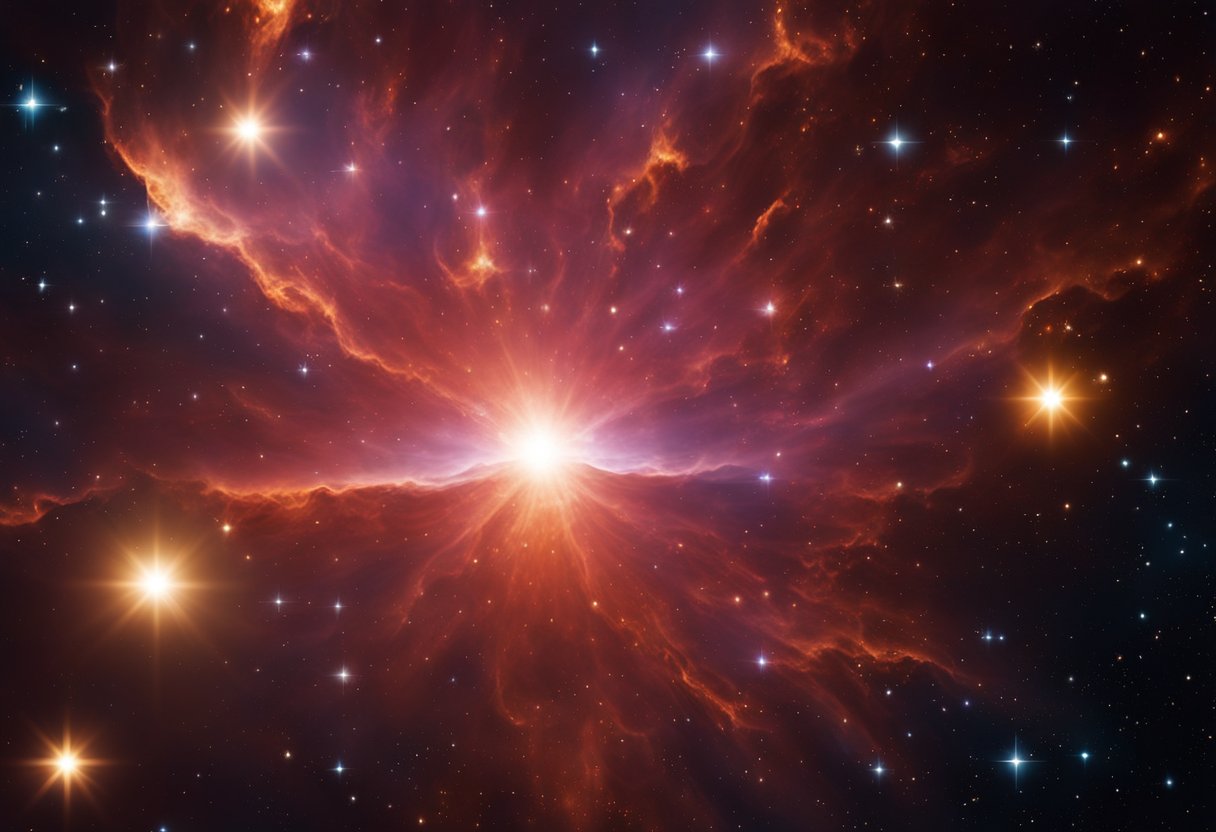
Stars have life cycles that are marked by significant transformations, in which nebulae play a crucial role. From the birth of stars within these cosmic clouds to their spectacular demise, nebulae are not just scenic backdrops but active participants in the stellar lifecycle.
In the vast stretches of space, stars begin as mere clumps within nebulae, called protostars. As these protostars accumulate mass through the gravitational collapse of gas and dust, they eventually reach the main sequence phase. In this stable period, stars like our Sun fuse hydrogen into helium, releasing the energy that lights our skies.
When a star exhausts its hydrogen, it leaves the main sequence. Stars with a mass similar to our Sun expand into red giant stars. In this state, they begin fusing helium into heavier elements. The outer layers of red giants can eventually expel into space, creating a shell of gas called a planetary nebula, while the core contracts into a white dwarf.
The fate of a dying star depends on its solar mass. While most stars will become white dwarfs, heavier stars may undergo a more explosive end, becoming neutron stars or even black holes. As these massive stars end their lives, they often seed the surrounding space with their constituent materials, giving rise to new nebulae and perpetuating the life cycle of stars and the evolution of our cosmos.
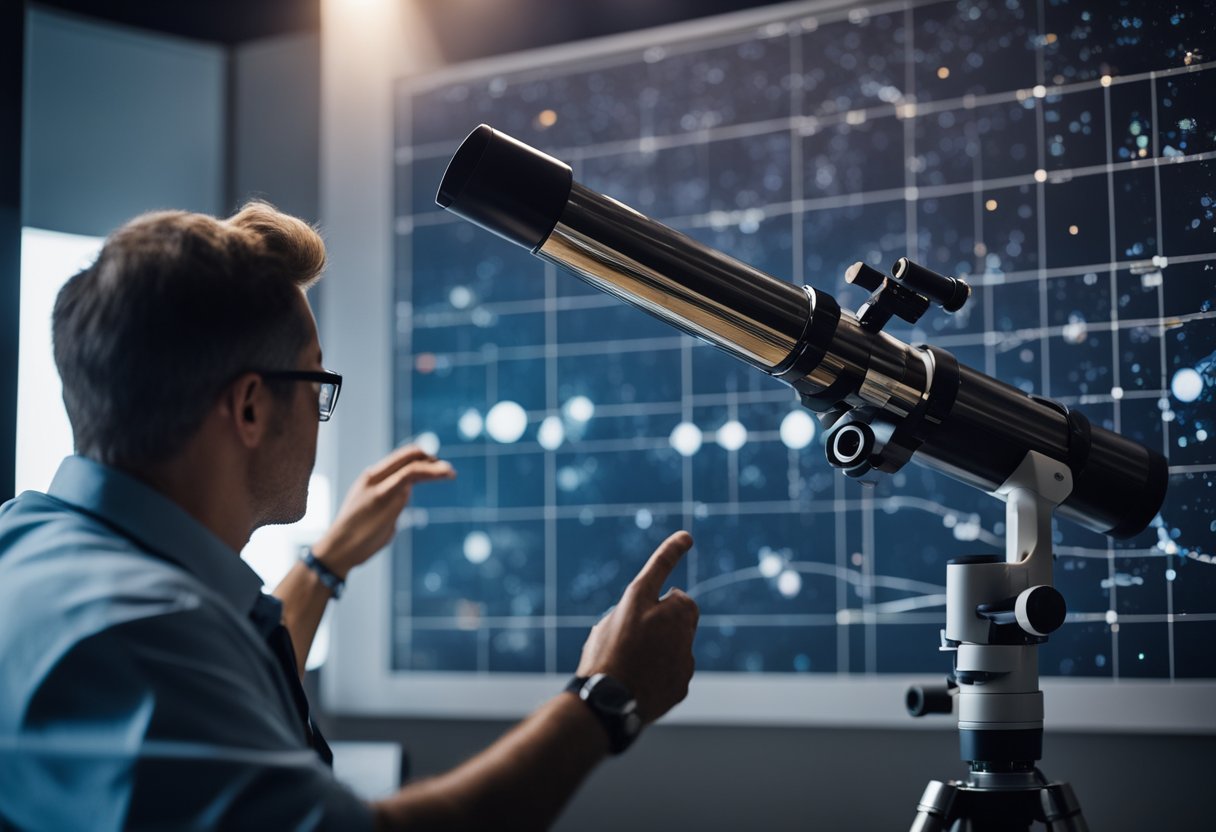
In our exploration of the cosmos, we’ve developed sophisticated methods to map and catalogue nebulae, making significant strides in understanding their locations and properties.
Astrometry, the precise measurement of stars and celestial bodies, plays a critical role in mapping nebulae. We utilise advanced instruments to measure their positions with high precision, often to a fraction of an arcsecond. This positional information acts as the foundation for celestial catalogues that include nebulae. These catalogues are crucial for professionals and amateur astronomers, helping us track and identify these enigmatic objects.
We have seen a transformation in mapping celestial objects thanks to digital sky surveys. Entire swathes of the night sky are imaged, and these images are processed to detect and catalogue nebulae. The resulting digitised archives, accessible to the astronomy community worldwide, contain a wealth of data. They include multi-wavelength imagery, which is instrumental in comprehending the structure and composition of nebulae.
The contributions of amateur astronomers should not be understated. With advances in technology, many possess equipment capable of capturing detailed images comparable to those from professional observatories. By submitting photographs to digital archives, amateurs significantly aid in the expansion of nebula data. Their enthusiasm and manpower bolster our collective efforts to map the heavens.
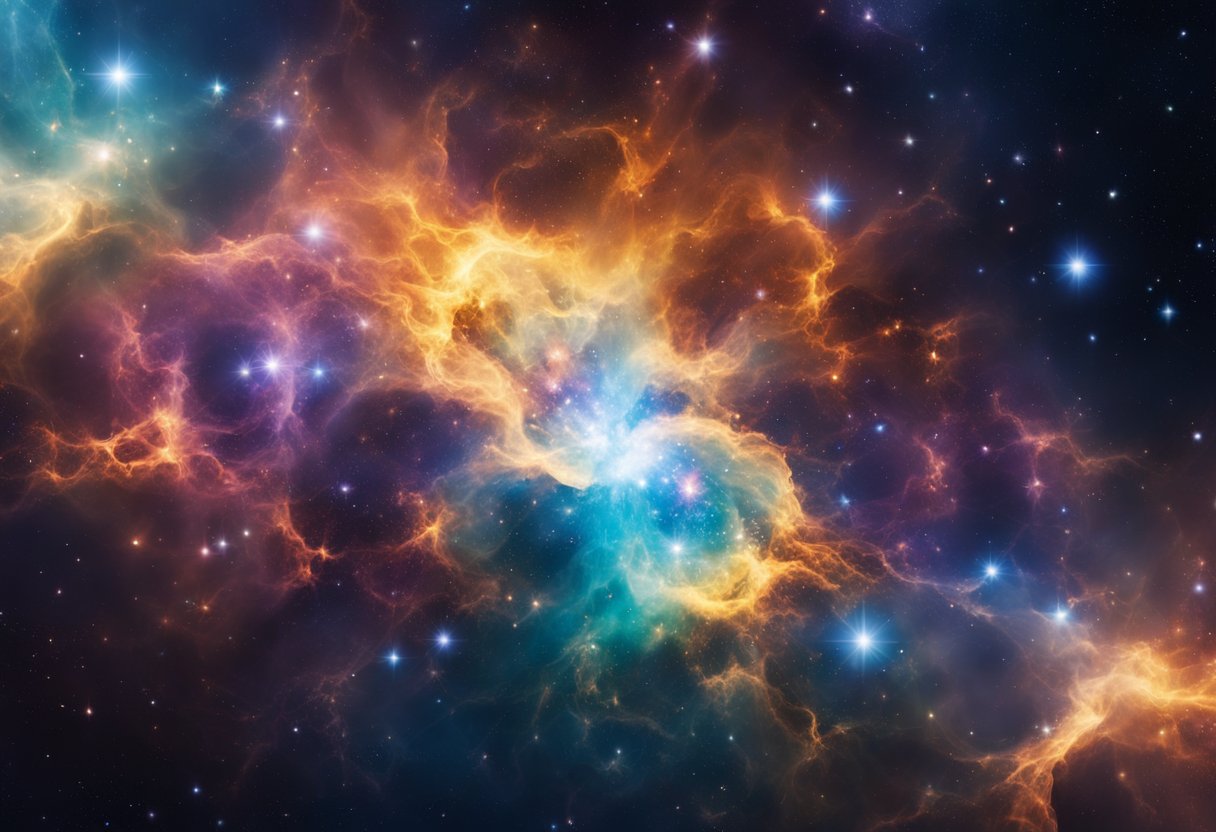
In our exploration of the cosmos, we’ve discovered that nebulae play a dynamic role within the celestial hierarchy, influencing and interacting with various cosmic entities from binary star systems to entire galaxies, including planetary systems and the vast reaches of interstellar space.
Nebulae can have a profound impact on binary star systems, particularly when one of the stars is in a late stage of its life cycle. For instance, a star like YY Hya may significantly alter the shared gas envelope of its binary system. Here, material lost from the evolving star can be captured by its companion, or it may contribute to the surrounding nebula, enriching it and inciting further celestial phenomena.
Our understanding of galaxies, the massive structures binding stars, gas, and dust, extends to their interactions with nebulae. At times, nebulae can be the birthplaces of stars, nurtured by the abundant gas and dust. Conversely, the death of massive stars within these galactic clouds can trigger the formation of new stars, perpetuating a cosmic cycle of stellar evolution.
When considering the relationship between nebulae and planetary systems, we observe that the remnants of supernovae—in the form of nebulae—serve as the raw materials for future planetary systems. These cosmic clouds distribute elements across interstellar space, contributing to the diversity and complexity of emerging planetary systems, which is key to understanding our own solar system’s origin.
In our journey to comprehend the vastness of the cosmos, nebulae have provided us with some of the most profound glimpses into the universe’s processes, from star birth to the aftermath of their death.
The Hubble Space Telescope has supplied us with remarkable visions of nebulae, such as those highlighting the Pillars of Creation within the Eagle Nebula. The Hubble Heritage team, a group of experts at the Space Telescope Science Institute (STScI), has been instrumental in bringing these images to the public eye. STScI/AURA, the organisation managing Hubble’s science program, has facilitated many discoveries, enhancing our understanding of the universe’s structure and history. We owe much of our knowledge about the intricacies of stellar life cycles to these iconic snapshots.
Images captured by the Hubble Space Telescope have done more than advance our scientific knowledge; they have sparked the public imagination. The stunning photography of celestial objects like nebulae allows us to visualise the universe in ways previously impossible. The profound impact of these images is evident in endeavours such as SpaceVoyageVentures.com, a platform that not only documents our aspirations for space tourism but also reflects the collective awe and wonder these discoveries inspire. Through these awe-inspiring images, we relate more personally to the vastness of space and better appreciate our place within it.
In recent years, we have observed a remarkable expansion in our understanding of nebulae, thanks to advanced space observatories and international efforts. These discoveries have shed light on previously unknown phenomena and the birth of newborn stars.
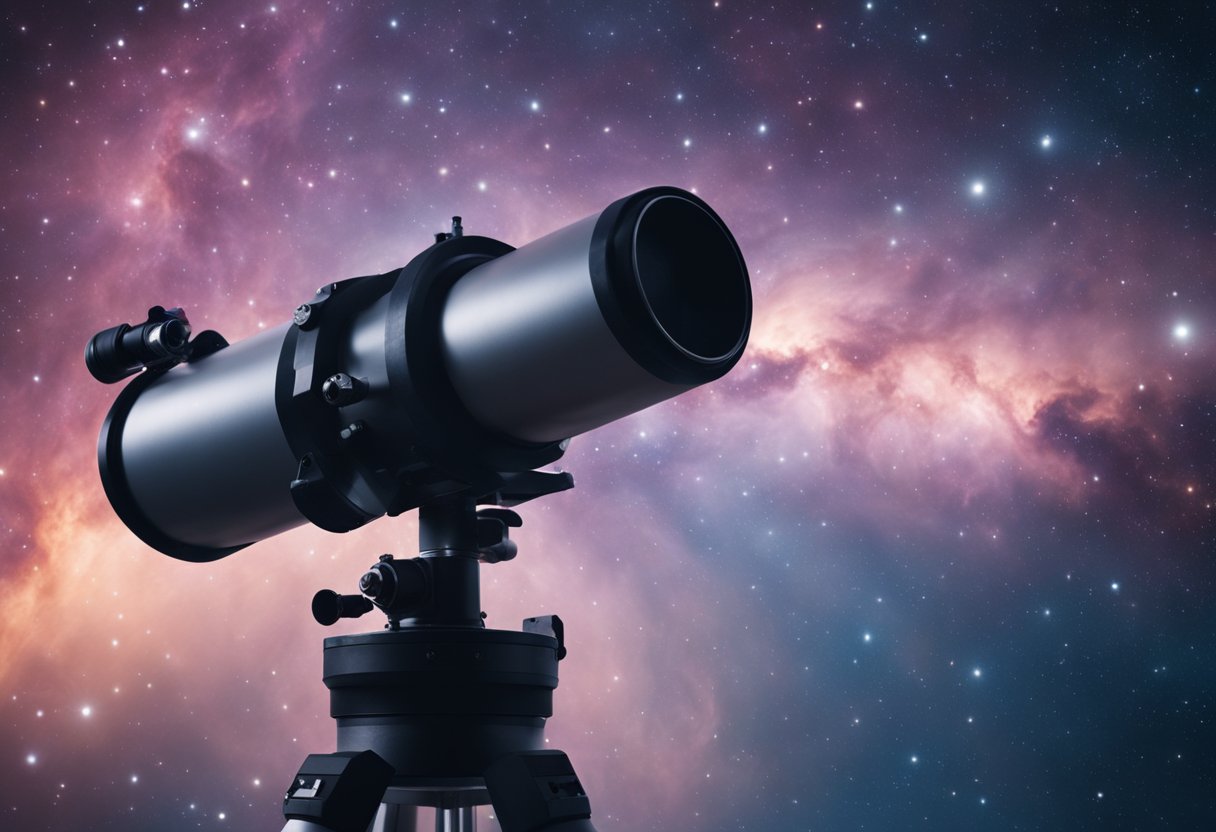
Modern telescopes have played a pivotal role in advancing our knowledge of nebulae. The James Webb Space Telescope (JWST), for instance, provided us with unprecedented views of Saturn’s atmosphere and ring system, including detailed observations that resemble planet-like formations within nebulae. Furthermore, explorations by JWST have led to the identification of dust reservoirs within supernovae, which are critical in understanding the composition of early galaxies. Another milestone was the detection of a new type of nebula surrounding binary stars, termed galactic emission nebulae, which was pivotal in deepening our comprehension of cosmic structures.
International collaboration has been essential to the progress in nebula research. Teams across continents have utilised facilities like the Hubble Space Telescope, showcasing the universal appeal and the collaborative nature of space exploration. These partnerships have been instrumental in confirming the existence of entirely new classes of galactic nebulae and in supporting the quest for nova observations. By pooling resources, data, and expertise, these joint ventures have enabled a broader understanding of the life cycle of stars, from their fiery births within nebulae to their eventual demise.
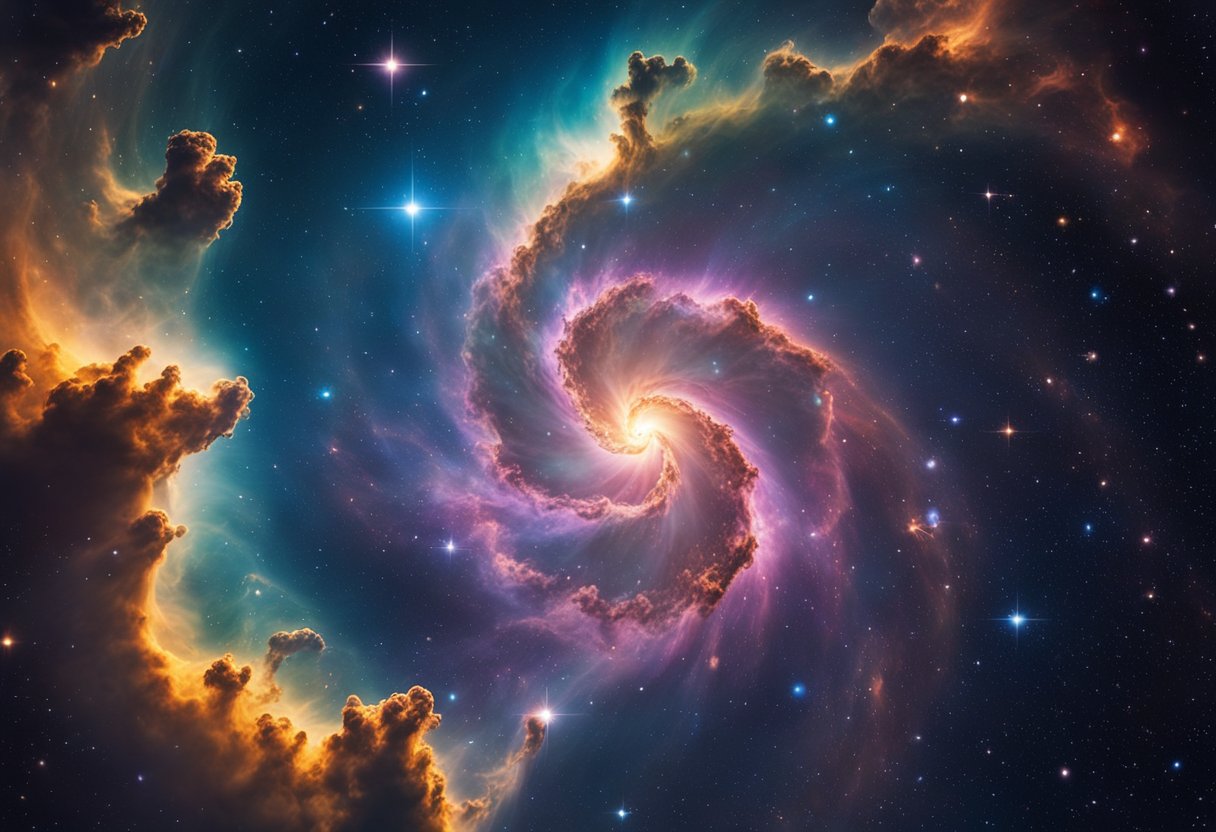
In the pursuit of understanding our cosmos, nebulae serve as crucial laboratories. We’re poised at the brink of a new era where technological innovation and ambitious space missions will deepen our grasp of these celestial phenomena.
In the near future, we are preparing to launch a series of earth-orbiting satellites that will shed light on the mysteries of nebulae several light-years away. These missions hold the promise of revealing the intricate details of the interstellar environment and how it influences the formation and expansion rate of nebulae. One particularly exciting endeavour is spearheaded by a collaboration of international space agencies aiming to deploy telescopes capable of capturing the nebulae’s evolution in unprecedented clarity.
Our ability to detect and analyse nebulae has been revolutionised in recent years. We are continuously refining our techniques to study the faint glow of nebulae located at the edges of the universe. We are developing highly sensitive instruments that can accurately measure the composition and dynamics of nebulae, hence propelling the rate of discovery. Advancements in spectroscopy, for example, are expected to provide us with more detailed spectral information that can be used to infer the properties of the dust and gas within these cosmic nurseries.
In this section, we address the most curious questions about the celestial wonders known as nebulae, touching upon their classification, formation, composition, notable examples, and the history of their discovery.
Nebulae are primarily classified by their formation process and appearance. Emission nebulae, such as the Orion Nebula, glow brightly due to the ionisation of gas by nearby hot stars. Reflection nebulae, on the other hand, shine by reflecting starlight. Dark nebulae, like the Horsehead Nebula, are dense clouds that obscure light, creating silhouette-like effects against brighter backgrounds. Finally, planetary nebulae represent the remnants of medium-mass stars that have shed their outer layers.
Nebulae form through various astronomical events. Emission and reflection nebulae are often the result of stellar nurseries where new stars are born from collapsing clouds of gas and dust. Planetary nebulae are created from the expelled material of dying stars, while supernova remnants are the spectacular aftermath of massive star explosions that leave a rapidly expanding shell of gas and dust.
The typical composition of a nebula includes hydrogen, helium, and trace amounts of heavier elements like oxygen, nitrogen, carbon, and sulphur. In certain nebulae, the presence of dust and ice particles can also be significant, influencing their appearance and dynamics.
Some of the most renowned nebulae include the Orion Nebula, which is a bustling region of star formation visible to the naked eye. The Crab Nebula stands out as an expanding remnant of a supernova explosion, rich in filaments and complex structures. The enchanting Helix Nebula is often referred to as the ‘Eye of God’ due to its circular shape and central brilliant eye-like appearance.
The first nebula to be recognised as more than just a star was the Orion Nebula. In 1610, Nicolas-Claude Fabri de Peiresc discerned its nebulous nature, observing it through a telescope as more than just a single point of light.
Notable astronomers in the early study of nebulae include Nicolas-Claude Fabri de Peiresc, who first identified the Orion Nebula, and Christiaan Huygens, who later provided more detailed descriptions of it. Sir William Herschel’s extensive work categorising nebulae laid the groundwork for our modern understanding of these celestial bodies.